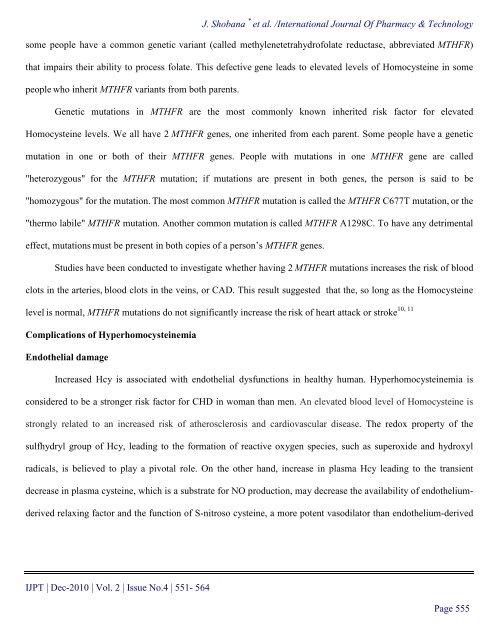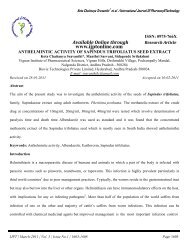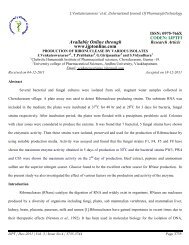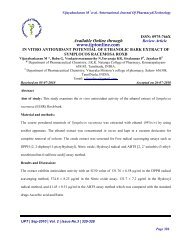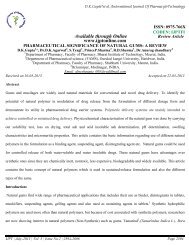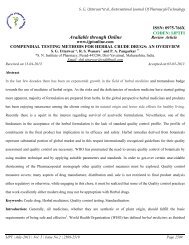Available Online through - International Journal of Pharmacy and ...
Available Online through - International Journal of Pharmacy and ...
Available Online through - International Journal of Pharmacy and ...
Create successful ePaper yourself
Turn your PDF publications into a flip-book with our unique Google optimized e-Paper software.
J. Shobana * et al. /<strong>International</strong> <strong>Journal</strong> Of <strong>Pharmacy</strong> & Technologysome people have a common genetic variant (called methylenetetrahydr<strong>of</strong>olate reductase, abbreviated MTHFR)that impairs their ability to process folate. This defective gene leads to elevated levels <strong>of</strong> Homocysteine in somepeople who inherit MTHFR variants from both parents.Genetic mutations in MTHFR are the most commonly known inherited risk factor for elevatedHomocysteine levels. We all have 2 MTHFR genes, one inherited from each parent. Some people have a geneticmutation in one or both <strong>of</strong> their MTHFR genes. People with mutations in one MTHFR gene are called"heterozygous" for the MTHFR mutation; if mutations are present in both genes, the person is said to be"homozygous" for the mutation. The most common MTHFR mutation is called the MTHFR C677T mutation, or the"thermo labile" MTHFR mutation. Another common mutation is called MTHFR A1298C. To have any detrimentaleffect, mutations must be present in both copies <strong>of</strong> a person’s MTHFR genes.Studies have been conducted to investigate whether having 2 MTHFR mutations increases the risk <strong>of</strong> bloodclots in the arteries, blood clots in the veins, or CAD. This result suggested that the, so long as the Homocysteine10, 11level is normal, MTHFR mutations do not significantly increase the risk <strong>of</strong> heart attack or strokeComplications <strong>of</strong> HyperhomocysteinemiaEndothelial damageIncreased Hcy is associated with endothelial dysfunctions in healthy human. Hyperhomocysteinemia isconsidered to be a stronger risk factor for CHD in woman than men. An elevated blood level <strong>of</strong> Homocysteine isstrongly related to an increased risk <strong>of</strong> atherosclerosis <strong>and</strong> cardiovascular disease. The redox property <strong>of</strong> thesulfhydryl group <strong>of</strong> Hcy, leading to the formation <strong>of</strong> reactive oxygen species, such as superoxide <strong>and</strong> hydroxylradicals, is believed to play a pivotal role. On the other h<strong>and</strong>, increase in plasma Hcy leading to the transientdecrease in plasma cysteine, which is a substrate for NO production, may decrease the availability <strong>of</strong> endotheliumderivedrelaxing factor <strong>and</strong> the function <strong>of</strong> S-nitroso cysteine, a more potent vasodilator than endothelium-derivedIJPT | Dec-2010 | Vol. 2 | Issue No.4 | 551- 564Page 555


